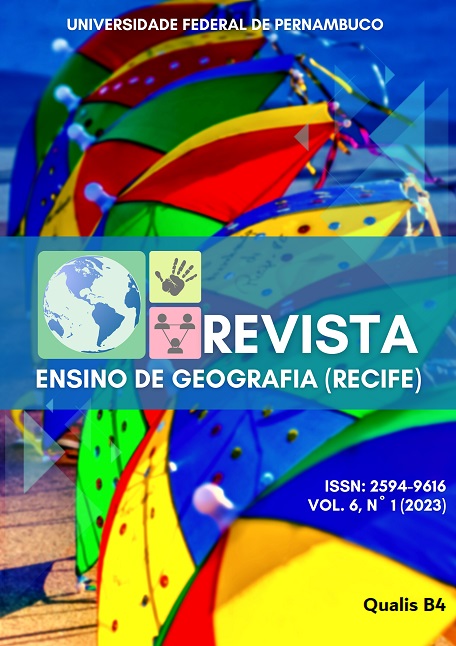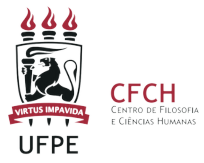Teaching geography and autism spectrum disorder: 3d material proposal
DOI:
https://doi.org/10.51359/2594-9616.2023.256876Keywords:
teaching of geography, inclusion, 3d didactic resources, autistic spectrum disorderAbstract
To think the teaching of Geography in the debate about the inclusion of students with autism spectrum disorder in the school context is an exercise that should include analyzes about the perspectives for adapting teaching resources. In this way, the article presents research results that aimed to produce an unconventional didactic resource in a 3D printer, aimed at teaching Geography in contexts with ASD. The research used a qualitative approach, mediated by survey procedures and the systematization of the theoretical framework in association with the delimitation of themes in Geomorphology and Cartography, aiming at the elaboration of non-conventional didactic resources with the use of 3D printing. It was concluded that the elaborated didactic resources constitute an alternative material for working with Geography themes with the student with ASD, using elements of playfulness, with the opportunity to constitute reinforcers to the didactic resources used in the classroom.References
BAPTISTA, Claudio Roberto. Política pública, Educação Especial e escolarização no Brasil. Educ. Pesqui. , São Paulo, v. 45, 2019. Disponível em: http://www.scielo.br/scielo.php?script=sci_arttext&pid=S151797022019000100407&lng=en&nrm=iso. Acesso em 13 jun. 2021.
BRASIL. Ministério da Educação. Base Nacional Comum Curricular. Brasília, 2018.
BORDINI, Daniela; BRUNI, Ana Rita. Transtornos do Espectro autista. In: ESTANISLAU, Gustavo M.; BRESSAN, Rodrigues Affonseca. Saúde Mental na Escola: o que os educadores devem saber. 1. ed. Porto Alegre: Artmed, 2014. p. 219-230.
CAVALCANTI, Lana de Souza. Ensino de geografia e diversidade: construção de conhecimentos geográficos escolares e atribuição de significados pelos diversos sujeitos do processo de ensino. In: CASTELLAR, Sonia (org.). Educação geográfica: teorias e práticas docentes. 2. ed. São Paulo: Contexto, 2006. P. 66-78.
CAVALCANTI, Lana de Souza. A geografia escolar e a cidade: ensaios sobre o ensino da geografia para vida urbana cotidiana. Campinas, SP: Papirus, 2008.
CULTS3D. Mapa da América do Sul. Disponível em: https://cults3d.com/en/3d-model/various/south-america-map-puzzle. Acesso em: 15 jan. 2022.
HEREDERO, Eladio Sebastian A escola inclusiva e estratégias para fazer frente a ela: as adaptações curriculares. Acta Scientiarum Education. Maringá, v. 32, n. 2, p. 193-208, 2010. Disponível em: https://periodicos.uem.br/ojs/index.php/ActaSciEduc/article/view/9772. Acesso em: 13 maio 2020.
MYMINIFACTORY. Mapa do Brasil regiões. Disponível em: https://www.myminifactory.com/object/3d-print-regions-of-brazil-8858. Acesso em: 15 jan. 2022.
NASCIMENTO, Francisca Samara Kizia Bezerra do. Ajude-nos a compreender o espaço geográfico - manual pedagógico com orientações ao professor de aluno com autismo. Dissertação (Mestrado Profissional em Geografia) - Universidade Federal do Rio Grande do Norte. Caicó-RN, 2020. 209f.: il.
OLIVEIRA, W. M. de; CARVALHO DELOU, C. M. Estudantes público-alvo da educação especial nos institutos federais: quem são? #Tear: Revista de Educação, Ciência e Tecnologia, Canoas, v. 10, n. 1, 2021. DOI: 10.35819/tear. v. 10. n. 1. Disponível em: https://periodicos.ifrs.edu.br/index.php/tear/article/view/4843. Acesso em: 01 dez. 2021.
PERTILE, E. B., MORI, N. N. R. Institutos Federais de Educação: as discussões sobre a terminalidade específica e a necessidade do atendimento educacional especializado. Teoria e Prática Da Educação, 2018. Disponível em: https://periodicos.uem.br/ojs/index.php/TeorPratEduc/article/view/45228. Acesso em: 26 nov. 2020.
RAABE, André, GOMES, Eduardo Borges. Maker: uma nova abordagem para tecnologia na educação. Revista Tecnologias na Educação. Ano 10. n.26. Edição Temática VIII – III Congresso sobre Tecnologias na Educação, 2018. Disponível em: https://tecedu.pro.br/wp-content/uploads/2018/09/Art1-vol.26-EdicaoTematicaVIII-Setembro2018.pdf. Acesso em: 12 fev. 2021.
RIBEIRO, Roberto Souza; MACHADO, Silvio Marcio Montenegro. A Geografia da Inclusão ou a inclusão da Geografia? In: NOGUEIRA, Ruth E. (org.). Geografia e inclusão escolar teoria e práticas. Florianópolis: Edição dos Bosques, 2016.
SERRA, Dayse. A mediação escolar na educação inclusiva de alunos com transtorno do espectro autista. In: Soares, A; Simão, J.; Neves, LM (Org.). Caminhos da Aprendizagem e Inclusão: entretecendo múltiplos saberes. 1ed. 2019.v. 2, p. 45-55.
SILVA, Cristiane Ribeiro da. A lei de reserva de vagas para estudantes com deficiência nos Institutos Federais de Educação: desafios e perspectivas nas políticas institucionais. 2020. Tese (Doutorado em Educação). Universidade Federal do Paraná, Paraná, 2020. 193p
SILVA, Josélia Saraiva e. Recursos didáticos não convencionais no ensino de geografia In: SILVA, Josélia Saraiva e. Construindo ferramentas para o ensino de geografia. Teresina: Edufpi, 2011. p. 61-76.
SOARES, Juliana Maria Moreira, FONSECA DE CAMPOS, Paulo Eduardo, Tecnologia Assistiva, Impressão 3D e Indústria 4.0. 13º Congresso Brasileiro de Pesquisa e Desenvolvimento em Design, Anais...Univille, Joinville (SC)
TEIXEIRA, M.C.T.V.; SILVA, N. A.; BARALDI, G.S.; EMERICH, D.R.; MILAN, E.; CARREIRO, L. R. R. Intervenções em sala de aula com alunos com Transtorno do Espectro do Autismo. In: DIAS, N.M.; MECCA, T.P. (Org.). Contribuições da neuropsicologia e da psicologia para intervenção no contexto educacional. São Paulo: MEMNON, 2015. p. 249-258.
THINGIVERSE. Biblioteca de formas do relevo. Disponível em: https://www.thingiverse.com/thing:1277448. Acesso em: 15 jan. 2022.
WEIZENMANN, Luana Stela; PEZZI, Fernanda Aparecida Szareski; ZANON, Regina Basso. Inclusão escolar e autismo: sentimentos e práticas docentes. Psicologia Escolar e Educacional. 2020, v. 24. Disponível em: https://www.scielo.br/j/pee/a/NwnK5kF4zM9m9XRynr53nwF/?format=pdf&lang=pt Acesso em: 24 jan. 2021.
ZABALA, Antoni. A prática educativa: como ensinar. Porto Alegre: Artmed, 2010.
Downloads
Published
How to Cite
Issue
Section
License
Copyright (c) 2023 Silvana de Sousa Silva, Elane do Socorro Oliveira da Silva

This work is licensed under a Creative Commons Attribution 4.0 International License.
Authors who publish with this journal agree to the following terms:- Authors retain copyright and grant the REVISTA ENSINO DE GEOGRAFIA (RECIFE) right of first publication with the work simultaneously licensed under a Creative Commons Attribution NonCommercial International 4.0 (CC BY-NC) that allows others to share the work with an acknowledgement of the work's authorship and initial publication in this journal.
- Authors are able to enter into separate, additional contractual arrangements for the non-exclusive distribution of the journal's published version of the work (e.g., post it to an institutional repository or publish it in a book), with an acknowledgement of its initial publication in this journal.
- Authors are permitted and encouraged to post their work online (e.g., in institutional repositories or on their website) prior to and during the submission process, as it can lead to productive exchanges, as well as earlier and greater citation of published work.



